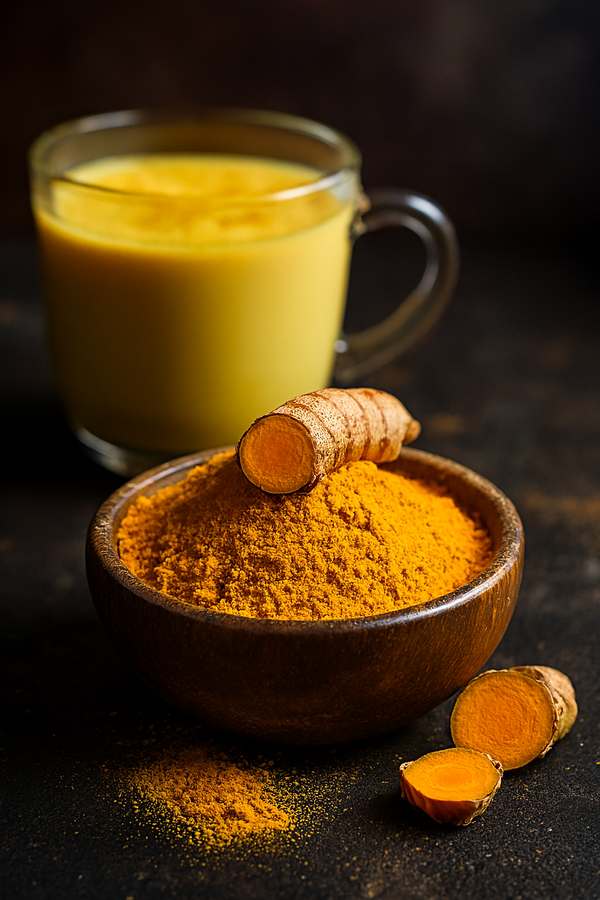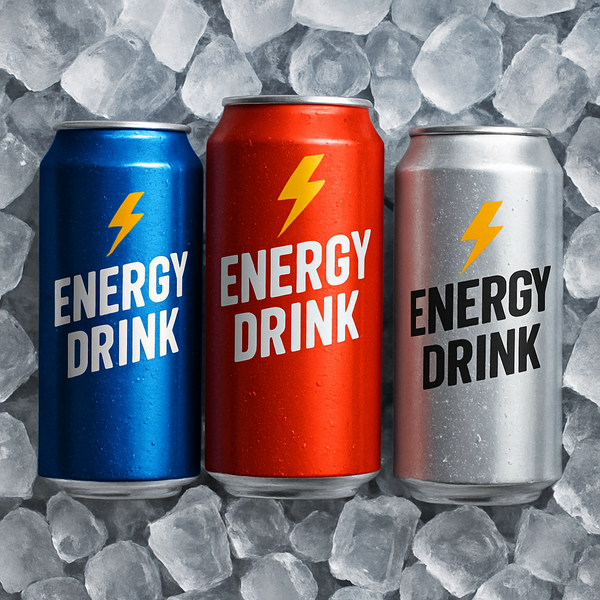Q&A: Popping the Question - How Do Popcorn Cooking Methods Impact Health?
Popcorn, a nutritious snack, is part of a healthy diet when prepared mindfully. Choose air-popped or microwave-popped options in specialised containers for optimal health. Store in a dry place, beware of mold, and use microwave popcorn bags with caution.


Take home messages🔑:
|
Popcorn's
Nutritional Value🌽: |
Popcorn is a
whole grain and retains all parts of the grain kernel, making it a rich
source of fibre, antioxidants and essential nutrients. Its health benefits
are best preserved when lightly seasoned and prepared using methods such as
air-popping or using a specially designed container for microwave popping. |
|
Preparation
Methods Matter🍳⚠️: |
The
healthiness of popcorn varies based on how it's prepared. Air-popped popcorn
is the healthiest option, being low in energy and fat. Stovetop popping
allows for flavour customisation but can increase energy and fat content
depending on the oil used. Commercial microwave popcorn bags often contain
added oils, salt, flavourings and potentially harmful chemicals e.g. PFAS and
should be avoided. Kettle-popped popcorn, while flavourful, tends to be
higher in calories and fat due to added oil and sugar. |
|
Acrylamide
Content☠️: |
Popcorn
contains varying levels of acrylamide, a potential carcinogen, depending on
the preparation method, with sweet popcorn generally having higher levels.
Further research is needed to understand acrylamide formation in popcorn. |
|
Storage🧺: |
To prevent
moisture and the potential growth of mold, it is important to store popcorn
in a dry environment. If mold does develop, it should be promptly disposed
of, and it's essential not to feed it to animals due to the health risks
associated with mold toxins for both humans and animals. |
|
Popcorn in
Diet and Weight Management⚖️🍿: |
Properly
prepared popcorn can be part of a weight control diet due to its satiety
effects and low energy content. However, the popcorn diet, which focuses
primarily on popcorn consumption, lacks nutritional balance for long-term
health. |
Introduction🎬🌍🍿
Popcorn, a beloved snack enjoyed worldwide, is a special variety of corn kernel that dramatically expands and puffs up when heated. Its popularity spans various cultural settings, often being a staple as a snack for children and adolescents (1), at movie theatres and social gatherings. Notably, popcorn stands out as a unique whole grain, retaining all parts of the grain kernel—the bran, germ and endosperm—during the popping process. This retention makes it a rich source of fibre (14.5 g of per 100 g), antioxidants, including polyphenolic compounds (2), as well as essential nutrients for example B vitamins, manganese and magnesium (3). When prepared through methods such as air-popping or using a specially designed container for microwave popping and seasoned lightly, popcorn serves as a nutritious, low-energy snack. However, the addition of butter, sugar (caramel coatings) or excessive salt can reduce its health benefits. Moreover, certain preparation techniques can transform this healthy snack into a potential health risk. Proper storage of popcorn is crucial; it should be kept in a dry, moisture-free environment to avoid dampness and potential mold growth. In the presence of mold, popcorn must be discarded promptly and not given to animals due to the health hazards posed by mold toxins to both humans and animals (4).
Not all Preparation Methods are Equal⚖️🍿
When comparing the nutritional and health aspects of different popcorn popping methods, a few key differences emerge:
- Air-popped Popcorn💨🌽: This method, often regarded as the healthiest among various popcorn popping techniques, involves using a hot air popper which circulates hot air through the kernels until they pop. This process eliminates the need for oil, thereby reducing the fat and energy content. Air-popped popcorn contains approximately 130 kJ (31 calories) per cup and 0.4 g of total fat (3). The simplicity of this method also preserves the natural flavour of the popcorn, making it a popular choice for those seeking a healthy snack.
- Stove-popped Popcorn 🍳🫙🔥: Stovetop popcorn is prepared by heating oil in a pot or pan on the stove, then adding popcorn kernels and covering the pot, preferably with a cover with holes. The heat causes the kernels to pop and the oil is used to distribute the heat more evenly, as well as to add flavour. This traditional method typically results in popcorn with more energy and fat than air-popped popcorn. Stovetop popcorn contains approximately 268 kJ (64 calories) and about 4.8 g of fat per cup (3). However, these values can vary widely depending on the amount and type of oil or fat each cook chooses to add. Furthermore, the type of oil selected can greatly influence the types of fat contained in the popcorn and overall healthfulness thereof. For example, using oils with a higher proportion of unsaturated fats, such as olive🫒 or canola oil, can make it a healthier choice, while using butter🧈 or coconut 🥥 oil can increase the saturated fat content. Oils have different smoking points and flavours, which can affect the taste and texture of the popcorn. The stovetop method allows for customisation in flavour and fat content, depending on the choice of oil and any additional seasonings.
- Microwave-popped Popcorn📦🌡️🍿:
3.1 Microwave-Popped Popcorn using a Specially Designed Container
This method involves using a microwave-safe container, often made from glass or silicone, to pop plain popcorn kernels in the microwave. The kernels are placed in the container without any added oil or flavourings and the container's lid is designed to allow steam to escape while keeping the popcorn contained. This method produces popcorn with a nutritional profile similar to air-popped popcorn. Typically, popcorn prepared in this manner contains about 130 kJ (31 calories) per cup and 0.4 g of fat, assuming no oil or butter is added post-popping. This method allows for a healthier snack option, as it avoids the added fats and chemicals found in many commercial microwave popcorn products.
3.2 Commercial Microwave Popcorn Bags
Commercial microwave popcorn bags are pre-filled with popcorn kernels and often include added oils, salt and flavourings. The convenience of these bags comes with a nutritional cost: a typical serving can contain about 1900 kJ (around 455 calories) and 20–30 g of fat, varying by brand and product. In addition to the nutritional considerations, there are health concerns regarding the chemicals used in some of these bags. Some microwave popcorn bags have been lined with substances such as perfluorooctanoic acid (PFOA) and perfluorooctanesulfonic acid (PFOS), part of the per- and polyfluoroalkyl substances (PFAS) group (5, 6). These chemicals are known for their durability and resistance to water, oil and heat but are also persistent in the environment and the human body (5, 6). Regular consumption of microwave popcorn from these bags has been linked to elevated levels of PFAS in the blood. However, the harmful effects could be mitigated by the fibre content of the popcorn itself as a study suggested that dietary fibre increases the gastrointestinal excretion of PFOA, PFOS and PFNA (7). Health issues associated with these chemicals include increased blood cholesterol levels (8), liver enzyme changes (9), reduced immune response (10), thyroid disorders (11) and potential developmental effects on foetuses during pregnancy (12). They are also potentially linked to serious conditions such as kidney and testicular cancer (13). According to my knowledge, packaging of microwave popcorn in South Africa did not include warnings about these risks. The IPEN-Nexus3 study (https://ipen.org/sites/default/files/documents/2023_03_r_en_pfas_popcorn_web.pdf) found widespread PFAS use in popular US microwave popcorn brands, with all tested products containing these chemicals. Notably, the study revealed the impact of weak US PFAS regulations on global health, as these PFAS-containing popcorn products are exported and consumed elsewhere, posing health risks. The study calls for urgent global action to eliminate PFAS in food products, emphasising the need for safer alternatives in food packaging. Due to these risks, consumers especially pregnant women are advised to be aware of the potential presence of PFAS in commercial microwave popcorn bags and to consider these factors when making purchasing decisions and to rather avoid this preparation method. PFAS are also not environmentally friendly.
4. Kettle-popped Popcorn🫕: Kettle popping is a traditional method where popcorn is cooked in a large kettle with oil and sugar, resulting in a slightly sweet and crunchy texture. Kettle-popped popcorn typically has more energy than air-popped popcorn, similar to stove-popped, due to the addition of oil and sugar. It contains around 502–628 kJ (120–150 calories) per cup and can have up to 5–8 g of fat, depending on the amount of oil and sugar used. While it offers a unique flavour, the added sugar can increase its carbohydrate content, making it a less optimal choice for those monitoring their sugar intake.
Acrylamide, a chemical compound that forms in certain foods during high-temperature cooking processes, is known for its potential health risks, including carcinogenic properties i.e. cancer forming (1). Popcorn contains acrylamide (1). The levels of acrylamide vary depending on the method of preparation, with Abedini et al. (1) indicating that microwave popcorn generally exhibits lower levels of this compound. Notably, sweet popcorn is found to have a higher acrylamide content. However, Abedini et al.'s study did not comprehensively cover all possible popcorn preparation methods and did not differentiate between the two distinct methods of microwave popping. Additionally, further studies are necessary to more accurately determine the amounts of acrylamide formed through different popcorn popping methods, to better understand and mitigate this health risk.
Health Benefits and Risks Related to Popcorn❤️⚠️🍿
The following table provides a comprehensive overview of both the health benefits and risks associated with different methods of preparing popcorn, helping readers make informed choices about their popcorn consumption:
|
Aspect of Popcorn |
Health Benefits |
Health Risks |
|
General |
- Regulation of Blood Sugar🩸: High fibre content helps regulate blood
sugar and insulin levels. - Heart Health❤️: Soluble fibre can lower blood cholesterol
levels. - Digestive Health 💩: Rich in fibre, aiding regular
bowel movements. - Antioxidant Properties🛡️: Contains polyphenolic compounds. - Weight Management⚖️: Low in energy, aiding in hunger control. - Popcorn may reduce the risk of
diverticulitis and do not exacerbate diverticular disease 🚫🦠, contrary to common dietary
advice (14) |
- High Salt (Sodium) Content🧂: Especially in commercially prepared or
microwave varieties, which can lead to increased blood pressure
and a higher risk of heart disease and stroke. - High energy Intake: In flavoured
or buttered varieties. - Digestive Issues😣: Excessive consumption of popcorn can lead
to an overload of fibre, causing bloating, gas and other digestive problems. - Tooth Damage 🦷: Due to hard unpopped kernels. - Allergic Reactions 🤧: In individuals allergic to corn
or additives. - If popcorn shows mold, it may
contain aflatoxins (a mycotoxin), harmful toxins that can cause vomiting,
diarrhoea, liver diseases such as hepatitis and cirrhosis, immune system
suppression, miscarriages, genetic mutations, birth defects and increased
cancer risk. Therefore, it's crucial to avoid eating or preparing moldy
popcorn or any moldy grains to prevent these serious health issues (4). - Acrylamide content🧪: Sweet popcorn has higher acrylamide content
(1). |
|
Air-popped Popcorn |
- Lowest in energy and fat. |
- Relatively low risk when
consumed without excessive salt or butter. |
|
Stovetop Popcorn |
- Can control oil and seasoning
levels. - Using heart-healthy oils such as
canola can enhance the nutritional profile by providing beneficial fats and
reducing the intake of unhealthy saturated fats, contributing to better heart
health and overall wellness. |
- Can be high in energy and fat
depending on the amount of oil used. - Risk of heart disease with
unhealthy oils when oils high in saturated or trans fats, such as palm oil,
coconut oil or partially hydrogenated oils, are used. |
|
Microwave Popcorn (Commercial
Bags) |
- Convenient preparation. |
- Chemical Exposure☠️: Some microwave popcorn bags are lined with
chemicals such as PFOA and PFOS, part of the PFAS group, which have been
linked to health issues including increased cholesterol levels, changes in
liver enzymes, reduced immune response, thyroid disorders and increased risk
of certain cancers. - The compound diacetyl, used in
some artificial butter flavourings, has been associated with respiratory
issues, known as "popcorn lung," particularly in factory workers (15). - Higher in energy and fat due to
added oils and flavourings. |
|
Microwave Popcorn (Special
Container) |
- Similar benefits to air-popped
popcorn. |
- Low risk if no excessive
additives are used. |
Popcorn and weight⚖️🍿
Popcorn, prepared in a healthy way, can be used as an alternative to replace high energy containing snacks such as potato chips. Nguyen et al. (16) comparing low-fat popcorn and potato chips found popcorn more effective in enhancing short-term satiety and reducing subsequent meal energy intake. This suggests that whole grain popcorn, due to its lower energy content and better satiety effects, can be a good option for managing hunger and energy intake in weight control strategies.
The popcorn diet involves consuming popcorn as a primary food to promote weight loss due to its low calorie and high fibre content (https://betterme.world/articles/popcorn-diet/). It typically included eating air-popped popcorn without high-energy toppings as a snack or even a meal replacement, aiming to reduce overall energy intake while still feeling full. However, like many single-food diets, it was not considered nutritionally balanced for long-term health.
Conclusion✅
Popcorn, when prepared healthily, is a nutritious snack with varying health impacts based on the cooking method. Air-popping or microwave popping using a specially designed container is the healthiest, offering low energy and fat, while stovetop popping allows flavour customisation but requires careful oil selection to avoid health risks. Microwave popcorn in commercial bags may contain harmful PFAS, whereas kettle-popped popcorn, though flavourful, is higher in energy. The high fibre content in popcorn offers several health benefits, including aiding in blood sugar regulation, heart health and weight management, but overconsumption can cause digestive issues. Popcorn can be part of a weight control diet due to its satiety effects, but the popcorn diet, focusing solely on popcorn, lacks nutritional balance. Overall, popcorn can be a healthy snack within a varied diet, provided it's prepared and consumed mindfully.
Reflections 🧘💡
· Over the course of a month, experiment with different popcorn preparation methods such as air-popped, stovetop (try canola and sunflower oil respectively) and microwave with a special container. Note any differences in taste, satisfaction, and how you feel physically after consuming it. This can help you identify the healthiest and most satisfying way to enjoy popcorn.
· If you usually consume commercially-prepared or microwave popcorn, spend a week reading and researching the ingredients listed on the packaging, especially focusing on any additives like PFAS. Reflect on how these ingredients might impact your health and explore safer, homemade alternatives.
· Be mindful of popcorn that shows signs of mold. According to the World Health Organisation (WHO), moldy grains may contain mycotoxins/aflatoxins that can cause serious health issues including liver damage, immune suppression and cancer. Reflect on your storage practices and ensure popcorn and other grains are kept dry and discard immediately if mold appears for both human and animal health.
Love what you’re reading? Share the knowledge! 📨 Forward this link to a friend who might also
enjoy it.
References📚
1. Abedini A, Zirak M-R, Akbari N, Saatloo NV, Badeenezhad A, Sadighara P. Acrylamide; a neurotoxin in popcorns: a systematic review and meta-analysis. Reviews on Environmental Health. 2023;38(4):647-53.
2. Coco Jr MG, Vinson JA. Analysis of popcorn (Zea mays L. var. everta) for antioxidant capacity and total phenolic content. Antioxidants. 2019;8(1):22.
3. Whitney EN, Rolfes SR, Crowe T, Walsh A. Understanding nutrition: Cengage AU; 2019.
4. Morales-Moo T, Hernández-Camarillo E, Carvajal-Moreno M, Vargas-Ortiz M, Robles-Olvera V, Salgado-Cervantes MA. Human Health Risk Associated with the Consumption of Aflatoxins in Popcorn. Risk Management and Healthcare Policy. 2020;13(null):2583-91.
5. Ramírez Carnero A, Lestido-Cardama A, Vazquez Loureiro P, Barbosa-Pereira L, Rodríguez Bernaldo de Quirós A, Sendón R. Presence of perfluoroalkyl and polyfluoroalkyl substances (PFAS) in food contact materials (FCM) and its migration to food. Foods. 2021;10(7):1443.
6. Seltenrich N. PFAS in food packaging: A hot, greasy exposure. Environmental Health Perspectives. 2020;128(5):054002.
7. Dzierlenga MW, Keast DR, Longnecker MP. The concentration of several perfluoroalkyl acids in serum appears to be reduced by dietary fiber. Environment International. 2021;146:106292.
8. Schillemans T, Bergdahl IA, Hanhineva K, Shi L, Donat-Vargas C, Koponen J, et al. Associations of PFAS-related plasma metabolites with cholesterol and triglyceride concentrations. Environmental Research. 2023;216:114570.
9. Costello E, Rock S, Stratakis N, Eckel Sandrah P, Walker Douglas I, Valvi D, et al. Exposure to per- and Polyfluoroalkyl Substances and Markers of Liver Injury: A Systematic Review and Meta-Analysis. Environmental Health Perspectives.130(4):046001.
10. Beans C. How “forever chemicals” might impair the immune system. Proceedings of the National Academy of Sciences. 2021;118(15):e2105018118.
11. Coperchini F, Croce L, Ricci G, Magri F, Rotondi M, Imbriani M, et al. Thyroid disrupting effects of old and new generation PFAS. Frontiers in Endocrinology. 2021;11:612320.
12. Eick SM, Goin DE, Trowbridge J, Cushing L, Smith SC, Park J-S, et al. Dietary predictors of prenatal per- and poly-fluoroalkyl substances exposure. Journal of Exposure Science & Environmental Epidemiology. 2023;33(1):32-9.
13. Steenland K, Winquist A. PFAS and cancer, a scoping review of the epidemiologic evidence. Environmental Research. 2021;194:110690.
14. Strate LL, Liu YL, Syngal S, Aldoori WH, Giovannucci EL. Nut, Corn, and Popcorn Consumption and the Incidence of Diverticular Disease. JAMA. 2008;300(8):907-14.
15. Dulberg AS. The Popcorn Lung Case Study: A Recipe for Regulation. NYU Rev L & Soc Change. 2009;33:87.
16. Nguyen V, Cooper L, Lowndes J, Melanson K, Angelopoulos TJ, Rippe JM, et al. Popcorn is more satiating than potato chips in normal-weight adults. Nutrition Journal. 2012;11(1):71.
In the process of creating this work, the author employed ChatGPT 4 to perform language editing.




